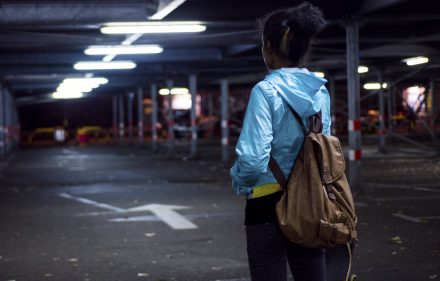Abortion rights, women of color, and LGBTQIA+ people are under attack. Pledge to join us in fighting for gender justice.
The Miseducation of Black Women, No Lauryn Hill

 Anti-blackness is a powerful force in our nation’s schools. It shapes policy, practices, expectations, and school culture. As renowned social and educational policy scholar Michael Dumas wrote, “The essence of anti-blackness in education policy: the Black is constructed as always already Problem—as non-Human, inherently uneducable, or at very least unworthy of education, and even in a multiracial society, always a threat to…everything else.” During the course of my K-12 education, I became familiar with the kind of anti-Blackness and systemic inequality in our education system that Dumas describes.
Anti-blackness is a powerful force in our nation’s schools. It shapes policy, practices, expectations, and school culture. As renowned social and educational policy scholar Michael Dumas wrote, “The essence of anti-blackness in education policy: the Black is constructed as always already Problem—as non-Human, inherently uneducable, or at very least unworthy of education, and even in a multiracial society, always a threat to…everything else.” During the course of my K-12 education, I became familiar with the kind of anti-Blackness and systemic inequality in our education system that Dumas describes.
As an Oakland native, I have personally witnessed what a subpar education looks like. For instance, during my junior year of high school, I recall sitting in a class where five to six students had to share the same book because the school did not have enough money to provide students with adequate materials. In addition to not having enough materials for their students, teachers also had low expectations for their students. In another telling example, during my sophomore year my teacher actually told us that she was not going to give out homework because she believed we would not do it anyway. The message I got was that I was not worthy of education.
The current mainstream dialogue would have you believe that urban schools are failing. What is rarely recognized is that current structures ensure that schools serving Black students fail.
School segregation is alive and well, and it often means that schools in whiter and higher income areas are given greater resources and better programming than schools serving Black students. Because housing patterns and property taxes determine where you go to school and what those schools can offer students, segregation dictates the quality of education students receive. But the separation of communities of color from white communities is neither an accident nor simply a remnant from a discriminatory past. It is an active, ongoing process that still denies many students access to a quality education and all of the social and economic benefits that a quality education offers. As a result, schools reinforce the racial stratification already in place, and expose youth of color to disproportionately high rates of unfavorable outcomes, including entry into the penal system through the school-to-prison pipeline , for which school push out is often the first step.
According to the National Women’s Law Center’s district-level analysis of school suspension data, “[Black] girls make up 95.9% of all suspensions of girls in [Oakland Unified School District], while they make up 89.2% of girls enrolled.” As a Black person who attended school in Oakland, there is no doubt in my mind that these disparities have everything to do with the kind of racial bias I personally witnessed and experienced. Until our society views people of color—more specifically Black people—worthy of education, we will continue to see the same results.
The K-12 school system needs to invest in all of our students, and it cannot happen when people of color are still suffering the consequences of the well- and ill-meaning white people who make policies about Black and urban education. Instead of pushing students of color out of school or funneling them into schools with inadequate resources, adopt inclusive policies, including restorative justice practices. to ensure that all students can receive the high-quality education they so desperately need and deserve.
Interested in suspension rates and racial disparities for girls in your school district? You can find that data here.




